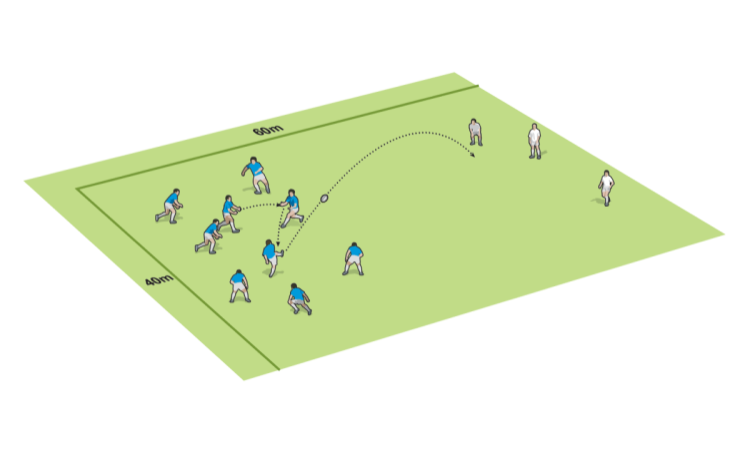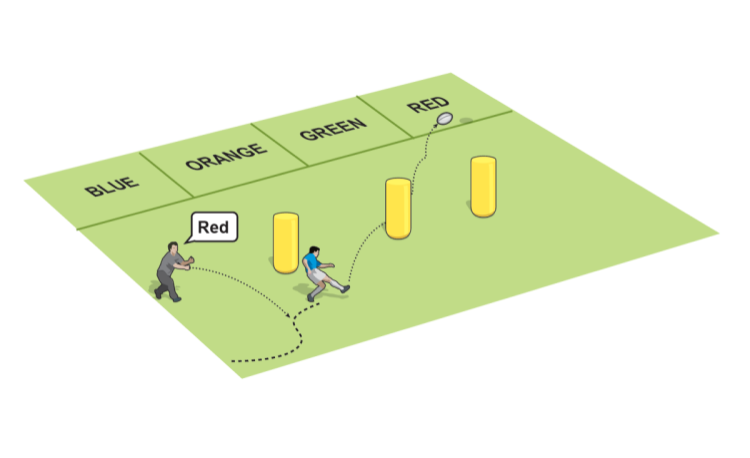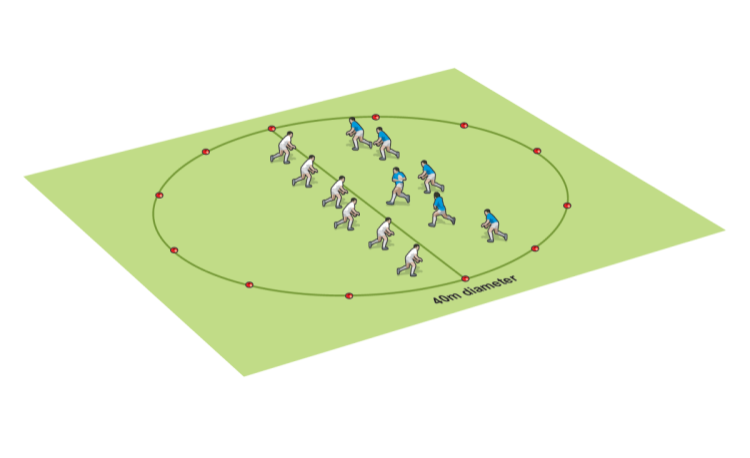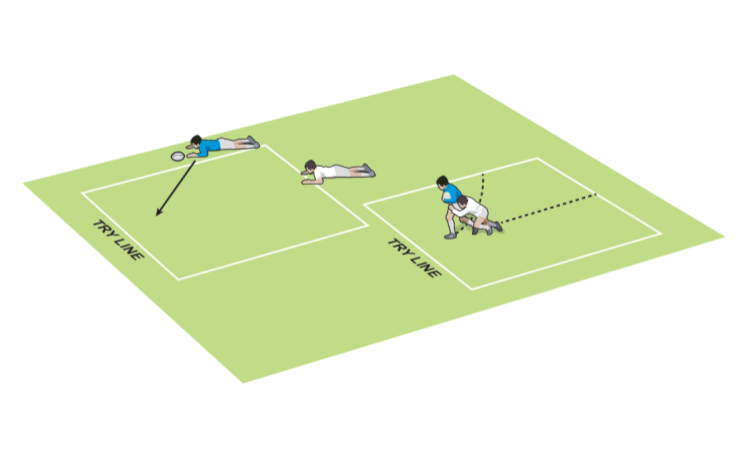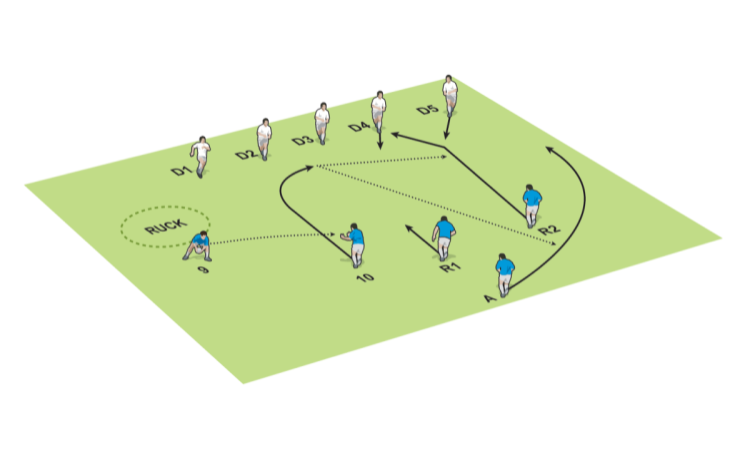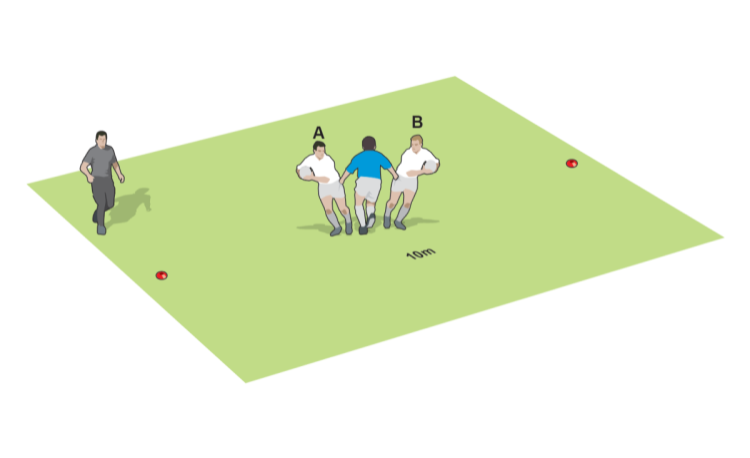You are viewing
1 of your 2 free articles
Taking a high ball
Kicking & Catchingby Dan Cottrell
U13–U16 | KICKING 2
Get your players used to taking a high ball and then running forward

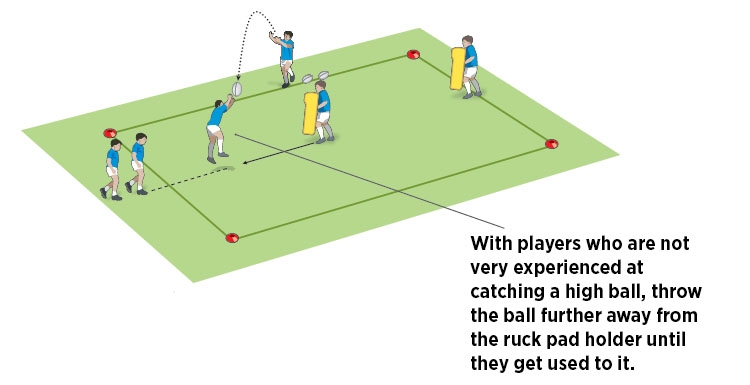
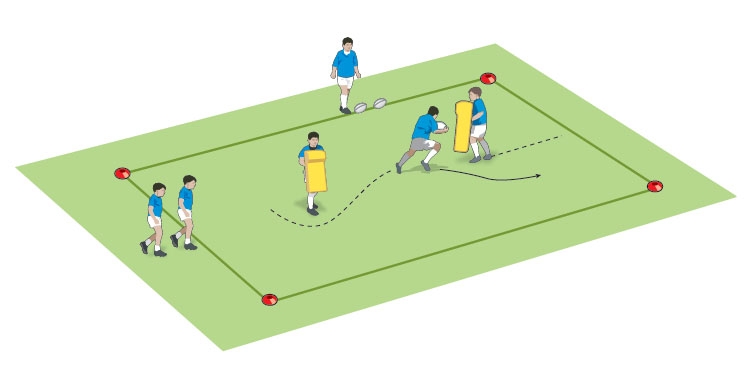
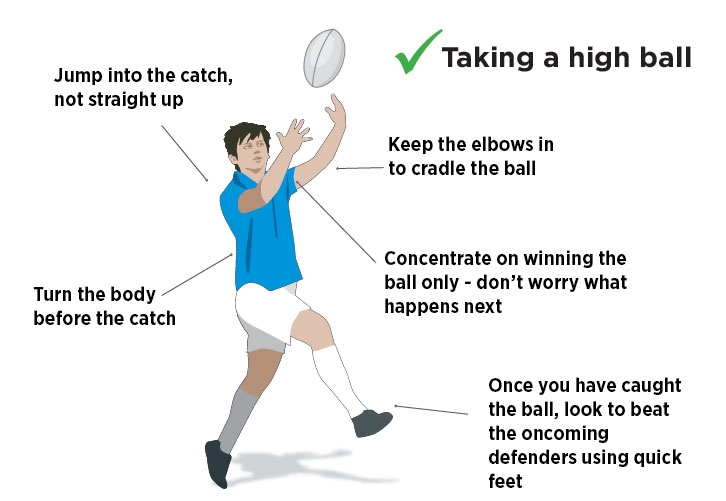
Line up lots of players and keep the catches coming. Remember to rotate the players.
“Jump into the catch”
“Challenge the ruck pad holder”
“Hit the ground running”
Get your players used to taking a high ball and then running forward
- Set out a 15m x 10m area. Put a ruck pad holder in the middle and another ruck pad holder at the end. Line up players on the front end of the area facing the ruck pad holders and place a feeder to the side.
- When you say “go”, the first player comes forward, the feeder throws a ball up into the air and the first player and the ruck pad holder challenge for the ball.


- Once a catch has been made (or the ball recovered from the ground), the ball carrier runs forward and aims to beat the other ruck pad holder with minimum contact.
- Develop by increasing the height of the throw, removing one or both of the ruck pads so it is semi-contact.


You will need
- A 15m x 10m area
- Balls
- Cones
- 2 ruck pads
Got more players?
Line up lots of players and keep the catches coming. Remember to rotate the players.
What to tell your players
“Jump into the catch”
“Challenge the ruck pad holder”
“Hit the ground running”
Newsletter Sign Up
Coaches Testimonials

Gerald Kearney, Downtown Las Vegas Soccer Club

Paul Butler, Florida, USA

Rick Shields, Springboro, USA

Tony Green, Pierrefonds Titans, Quebec, Canada
Subscribe Today
Be a more effective, more successful rugby coach
In a recent survey 89% of subscribers said Rugby Coach Weekly makes them more confident, 91% said Rugby Coach Weekly makes them a more effective coach and 93% said Rugby Coach Weekly makes them more inspired.
Get Weekly Inspiration
All the latest techniques and approaches
Rugby Coach Weekly offers proven and easy to use rugby drills, coaching sessions, practice plans, small-sided games, warm-ups, training tips and advice.
We've been at the cutting edge of rugby coaching since we launched in 2005, creating resources for the grassroots youth coach, following best practice from around the world and insights from the professional game.
More from us
© 2023 Rugby Coach Weekly
Part of Green Star Media Ltd. Company number: 3008779
We use cookies so we can provide you with the best online experience. By continuing to browse this site you are agreeing to our use of cookies. Click on the banner to find out more.






